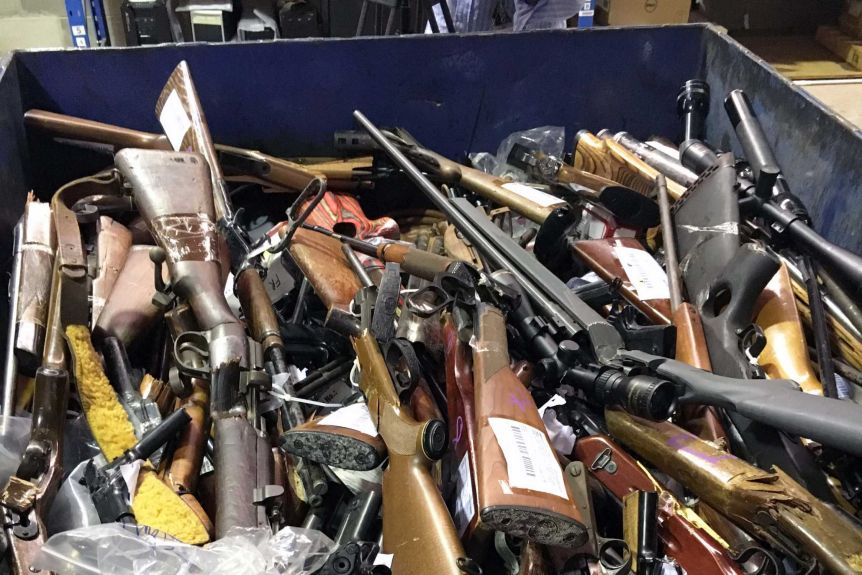
The Queensland Audit Office has just performed a performance audit on firearms regulation titled Regulating Firearms (27 November 2020. Report No 8 :2020-1).
The bad news for shooters is that there is going to be quite a bit of tightening up at the Registry in Queensland, so I, to ensure that you do not get caught out, use this as a warning to conduct your own compliance audit to ensure that you comply with the law.
The timing of this report suggests that the Queensland Government has observed the shambolic mess that is occurring over the border in Murwillumbah, and is seeking to ensure that it does not face similar fall out.
The audit report is not that bad. I have seen far worse audits performed on regulatory agencies; however, the report does highlight some significant failings.
Before I start, the report interestingly mentions that on 31 December 2019 Queensland had 185,742 current licence holders who possessed 829,743 firearms and that there were some 271 registered ranges in Queensland.
It reports that in the last 5 year 3,205 registered firearms have been stolen, 633 registered firearms lost, and 780 of the stolen or lost firearms recovered.
Some 601 firearms were stolen in 2015 and 643 in 2019 a 7% increase.
The report does not mention how many individual thefts that represents, as one theft could account for the difference, and it does not report the theft levels in other years, leaving my cynical mind to suggest that a best and worst year may have been selected that may not be representative of the true rates of theft in Queensland.
The Registry is criticised for not providing necessary management, coordination and oversight of the firearms compliance program and having an approach that is not intelligence driven or focussed on risk-based monitoring.
They identified numerous cases where firearms were not seized promptly where the licensee has either become unlicenced or is deceased.
It recommends the risk-based targeting of licence inspections, and the conduct of supplementary inspections.
A risk-based inspection program would tend to target people who are considered at risk-a history of offending or licence loss, or who are otherwise high risk, for example:
• High risk locations
• People with a history of offences, firearms loss or storage issues
• Those who possess large numbers of firearms
• Collections that are of particular concern to Police such as semi-automatic rifles, handguns, or high calibre rifles with potential anti-personnel sniping application.
The report recommends that compliance monitoring not just focus on storage, but also review other issues. Given the aging population, I assume Police would show interest if someone showed issues that are perhaps consistent with dementia- so make sure you know where your keys are!, they are also likely to check other databases to ensure your ‘fitness’ has not changed.
The report highlights issues with the fit and proper person test and public interest test. Interestingly the report found that the Act does not consider cases where guilt is proven but no conviction recorded. This is wrong.
Such a person is not subject to mandatory exclusion; however, the facts would clearly be relevant to whether the person may or may not be a fit and proper person’.
The report also mentioned the failure to define ‘public interest’ as a failing.
I again disagree. What is in the ‘public interest’ and who is ‘fit and proper person’ need to be broad concepts. If one seeks to define them, one runs a risk of reducing a licensing process to a ‘tick and flick’ exercise, with little nuanced judgement occurring by decision makers.
Form a regulatory point of view that is a dangerous idea, however it does enable decision making to be performed by less well qualified- and thus lower-level staff.
It recommends that in assessing an applicant, all available databases were not searched, such as the National Police Reference System and the Department of Motor Transport. So if you are an interstate offender, or have a bad driving history that has not yet been taken into account in considering your suitability to hold a firearms licence, watch out.
One interesting point raised was that the software was not accurate and up to date, and that the QPS were ineffective at tracking the sale transfer and movement of firearms, with interstate transfers not being checked.
In ranking the Registry ‘inn-effective’ in respect to registration, the Auditor has not indicated a percentage sample of error. The last audit to do so was in Western Australia many years ago and I recall that the error rate was something like 22%.
The brief audit conducted in NSW the other year also failed to indicate this, and I have long suspected that the wool is being pulled over the eyes of the Australian public in respect to just how efficient and effective our red herring registration system actually is.
Given interstate compliance issues and outdated software, if a registration system is to be continued in Australia (and I do not consider one necessary) I believe that it needs to be a national scheme.
The 271 licenced ranges were mentioned as being in need of ‘proactive inspection’- so watch out guys, as were dealers.
Dealers and their associates are currently not being proactively monitored apart from adhoc inspections and not effectively auditing their compliance. Indeed, the unit has only one staff member with the requisite expertise to do this, and relied on local police to perform inspections.
So, if you are a dealer expect to be audited ensure building ceilings, shop fronts, firearms safes and vaults all meet safety requirements, keep the register up to date and do not exceed the number of firearms that you are permitted to hold on your licence.
You have been warned.

0 Comments